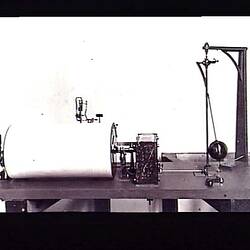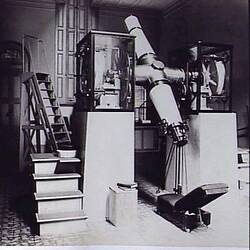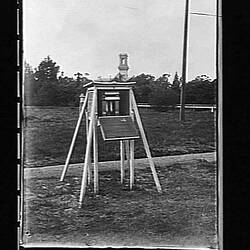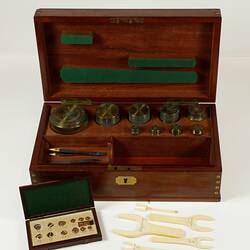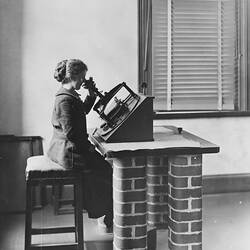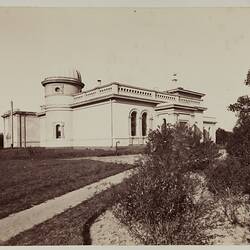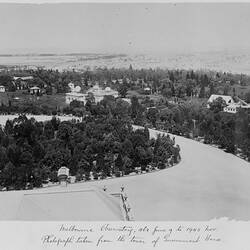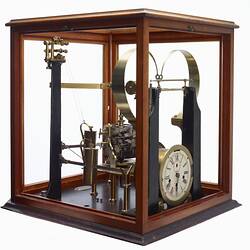Summary
Thomson type quadrant electrometer, with replenisher and auxiliary electrometer, circa 1900. Used at Melbourne Observatory.
An electrometer measures electrical charge.
The basic quadrant electrometer was developed by Lord Kelvin (Sir William Thomson) in the 1860s. The earliest versions were usually housed inside a "bird cage" or box. The bird cage electrometers got their name from the Faraday cage that was used to protect the instrument from stray electrostatic charges. In some cases, a glass bell jar protected them from the air currents which could affect their operation. The other common approach was to house the electometer inside a wooden box, the front of which was made of glass.
Physical Description
Similar to ST 023156, except on Leyden jar or electrostatic shield. Has geared replenisher in top of lantern, and divided ring electrometer for determining the charge on the needle (sight hole near top of lantern). Main body is cylindrical glass housing. Quadrants have glass insulators.
More Information
-
Collection Names
-
Collecting Areas
-
Acquisition Information
Donation from Melbourne Observatory, 1945
-
Inventor
Sir William Thomson (Lord Kelvin), England, Great Britain, circa 1860
-
User
Melbourne Observatory, South Yarra, Greater Melbourne, Victoria, Australia
-
Inscriptions
No manufacturer's marks.
-
Classification
-
Category
-
Discipline
-
Type of item
-
Overall Dimensions
25 cm (Length), 25 cm (Width), 39 cm (Height)
-
References
[Link 1] accessed 07/0/2010.
-
Keywords



